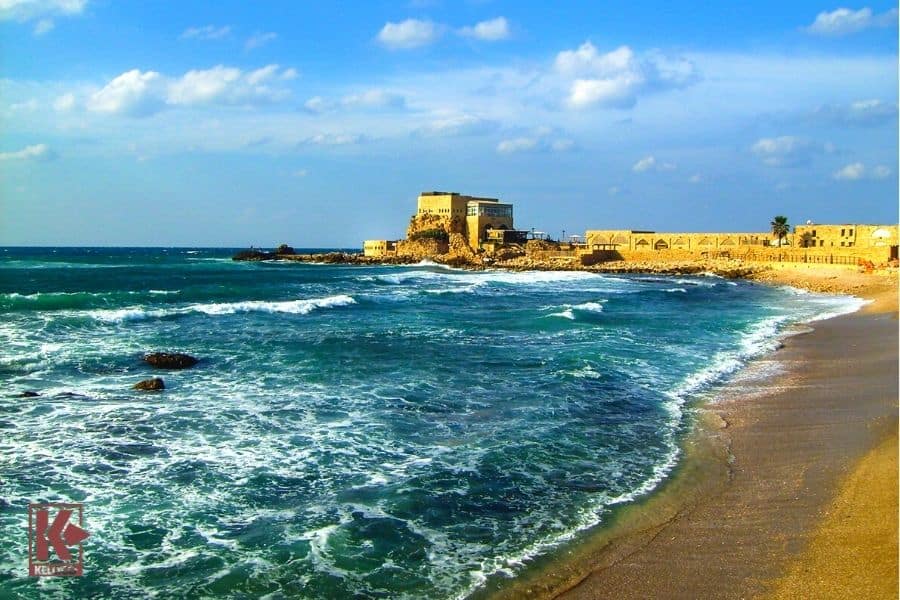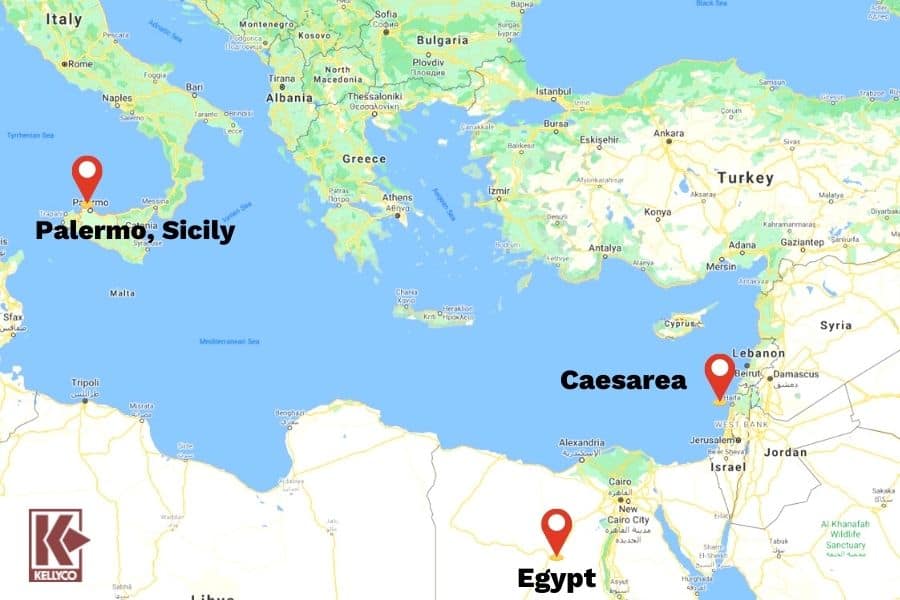Caesarea Sunken Treasure: The Largest Discovered Treasure in the State of Israel
Published by Sam Jacobs on 02/24/21
Most of the treasure hoards we have covered elsewhere on this site (namely the Hoxne, Staffordshire, and Cuerdale Hoards, among others) come from the West. But we will now turn our attention toward the Levant, where, in February 2015, a vast hoard was found in the Holy Land. Much like the other treasure troves we have discussed on this site, the Caesarea sunken treasure was uncovered not by professional treasure hunters, but by hobbyists simply doing their thing who hit the proverbial lottery.
In this case, the hobby in question was diving, adding an additional layer of wonder to the story: Not simply buried treasure, but underwater buried treasure. Indeed, this was the largest treasure ever discovered in the State of Israel. Found by the amateur divers at Caesarea National Park, they quickly referred their find to Antiquities Authority, who then sent a team out with the divers — and a set of metal detectors.
Amateur Divers Discover Priceless Treasure

Part of the Caesarea Gold Treasure
The Caesarea sunken treasure was found on an overcast day when Zvika Fayer and four of his friends were diving. Fayer, in particular, liked the area because it had so many fish and boasted a shipwreck, along with its cargo and pottery. He had visited the same area dozens of times without ever once coming across the treasure that would make international news. Like many other areas of archaeological significance, the place where Fayer was diving was open to the public, with the understanding that any treasure there should be reported immediately to the Israeli authorities.
The difference between this visit and the dozens of other times he had shown up to dive these waters is that there had recently been a major storm. This storm disturbed the area and, as a result, he saw something shimmering on the ocean floor. Initially, he thought that what he saw was little more than the foil wrapper of a piece of chocolate in the shape of pirate coins that are popular with children. But he couldn’t have been more wrong. He was shocked when he picked up the first piece and it wasn’t foil at all, but a piece of solid gold with Arabic inscriptions on it.
He then began sweeping sand away where he found first one more coin, then what seemed to be an endless amount of them. The final result was stunning. Over 2,000 gold coins from the Fatimid Caliphate, an Arab Shi’a religious empire that existed from the 10th to the 12th Century. Various denominations were found by the Israeli Antiquities Authority in their thorough investigation of the region, including dinars, half dinars, and quarter dinars, all of various weights and purity.
Israeli Authorities Step In

Mediterranean Beach in Caesarea, Israel
At first, the discoverers received a bit of a skeptical and accusatory treatment from the authorities. They wanted to know why the divers had removed the artifacts from their original location. However, the divers reported that there was another major storm incoming and that they were afraid that if they didn’t pull the coins out of the sand, that they would be lost forever. They did what they could to retrieve as many coins as they could immediately before the storm hit, then went back to help the authorities uncover more.
It is thought that the treasure was from a secondary ship that was wrecked on its way to the central government in Cairo with tax revenues. Other theories include that the treasure was payment for a garrison of soldiers stationed at Caesarea or that it came from a particularly successful merchant ship. Finally, there is a theory that the Caesarea sunken treasure was buried for later retrieval by a family who were either killed or sold into slavery by Crusaders and was never able to recover it.
The State of Israel has strict laws about the removal of antiquities and treasures from their site of origin compared to many other countries. Doing so is punishable by up to five years in prison. So it’s not surprising that the amateur divers quickly reported their find.
The Contents of the Caesarea Sunken Treasure

Map of Caesarea Gold Treasure
The oldest coin in the Hoard is a quarter dinar hailing from Palermo, Sicily. At this time. Sicily was a province of the Fatimid Caliphate. This coin dates from the late 9th Century. Most of the coins, however, were minted in Egypt during the reigns of Fatimid caliphs Al-Hakim his son Al-Zahir. Collectively the pair reigned from 996 to 1036.
The coins are in a condition that could accurately be described as miraculous. They required no extensive cleaning, despite being at the bottom of a body of water for over 1,000 years. Some of the coins were bent or had teeth marks on them, which is evidence that someone had physically inspected them at some point in the distant past. The coins are 24 karat gold, with purity ranging up to 95 percent, making them an incredible find, even just from the perspective of wealth.
For their part, the authorities said that the value was basically impossible to determine, declaring that it was “priceless.” Of course, one can always put a value on the weight of gold in dollars and cents, but it is virtually impossible to place a value on archaeological artifacts and historical finds of the kind those divers happened upon that fateful day. The total weight of the haul was 20 pounds (about 9 kilograms).
The sad ending of this story, however, is that the Caesarea sunken treasure is now the property of the State of Israel. And, unlike many of the treasures that we have reported on from England, there is no finders’ fee. The people who found the gold under the sea are as rich as they were on the day they went diving. Thus, the State of Israel is different from the United Kingdom in that it relies upon sticks rather than carrots to get people to report their findings to the proper authorities. In Israel, the reward for finding gold for the government is the knowledge of a job well done — and staying out of prison.
